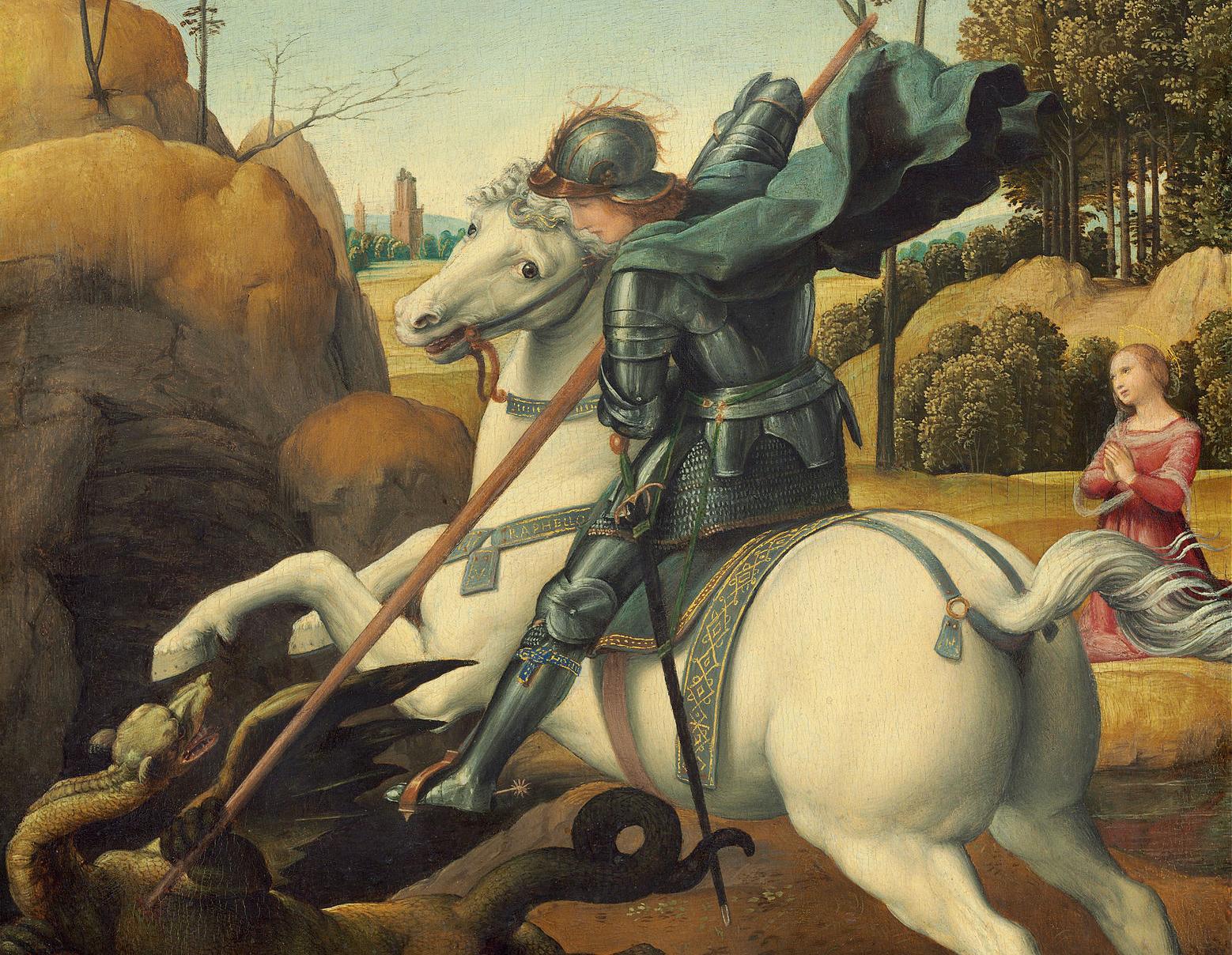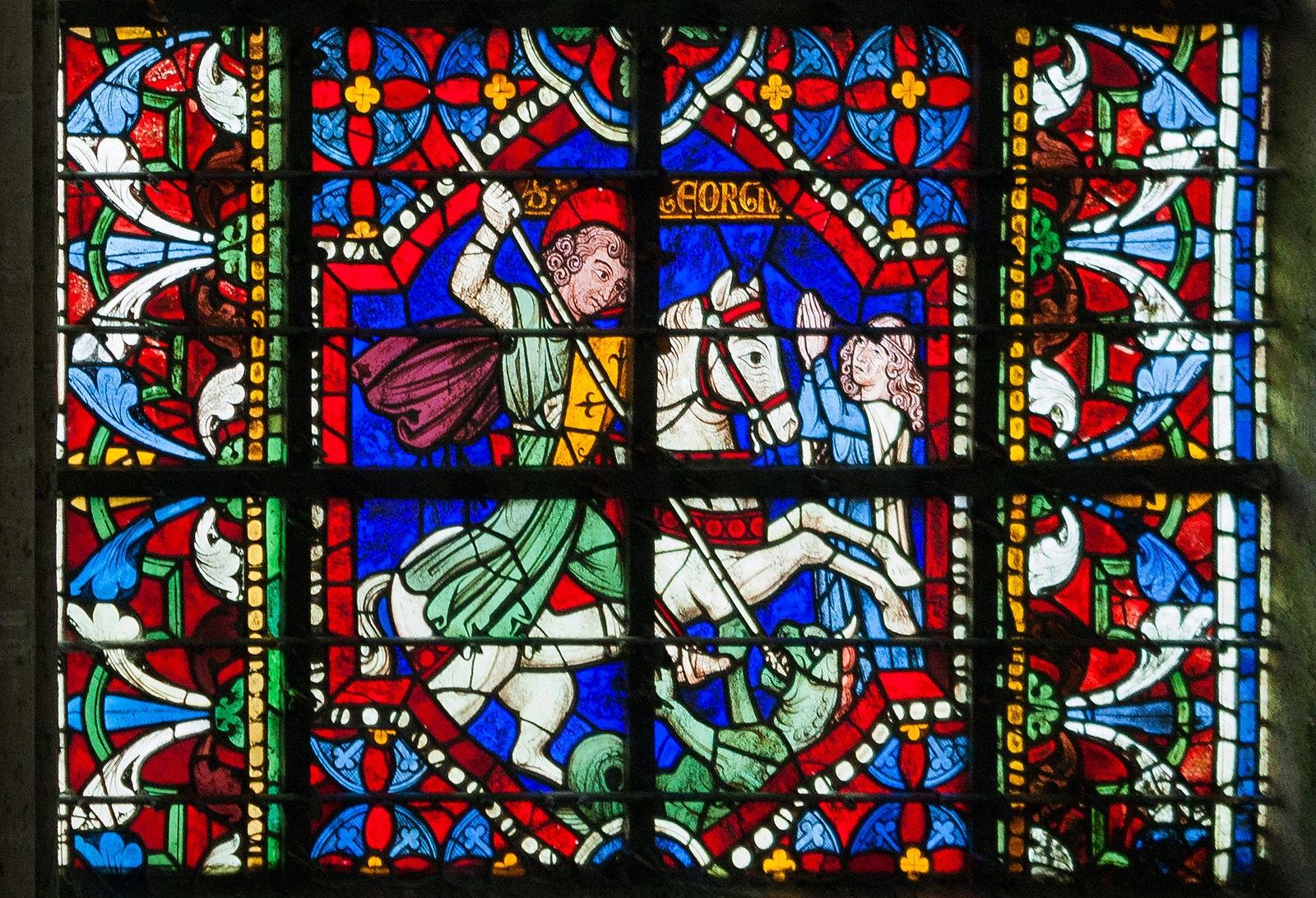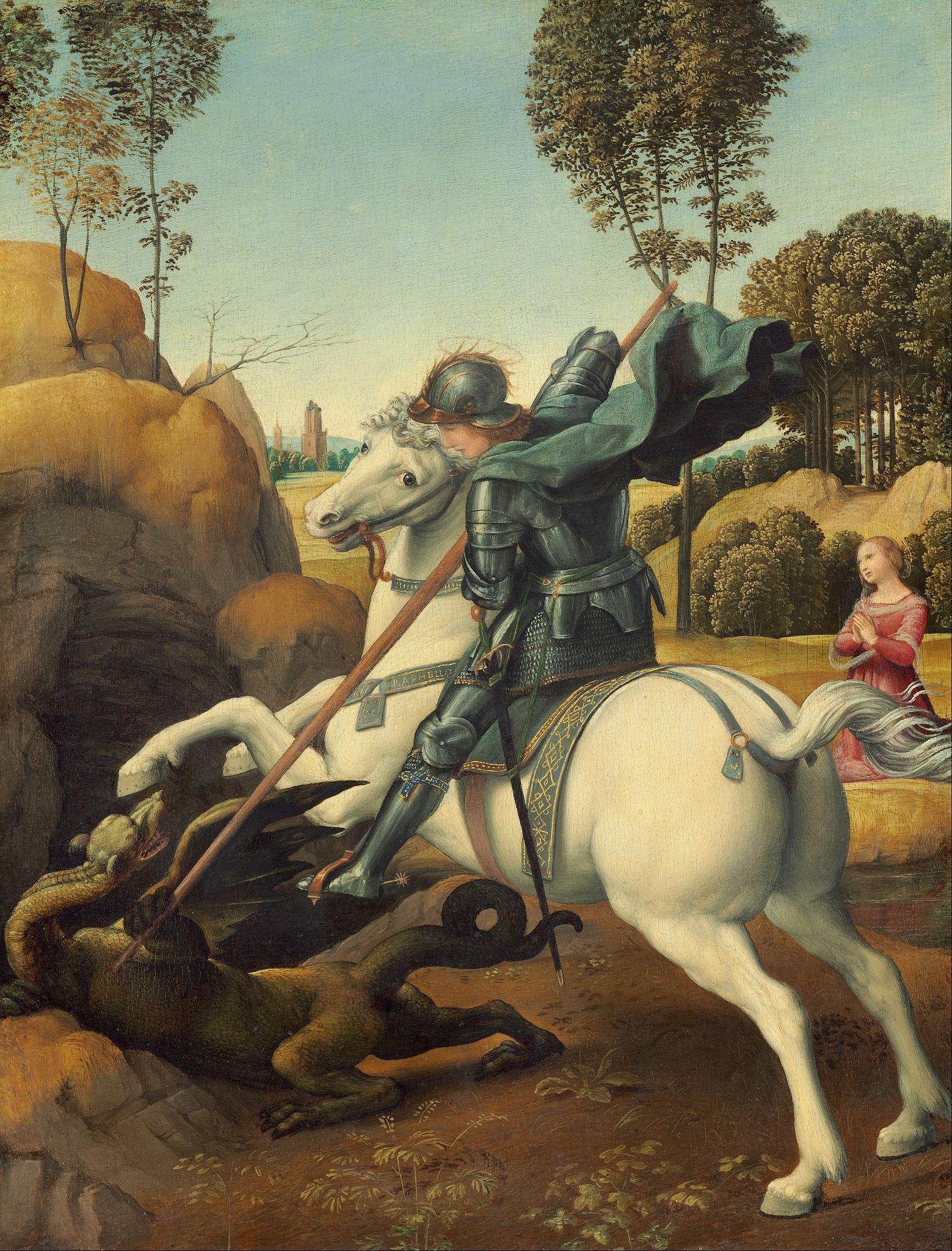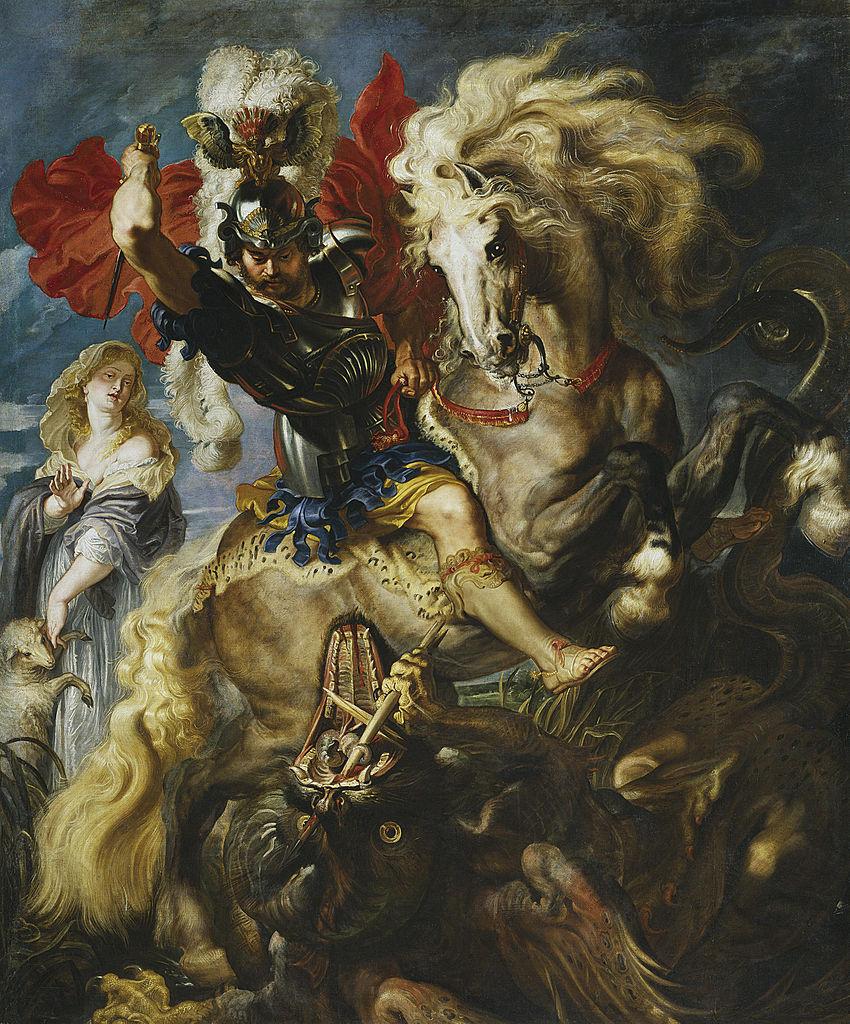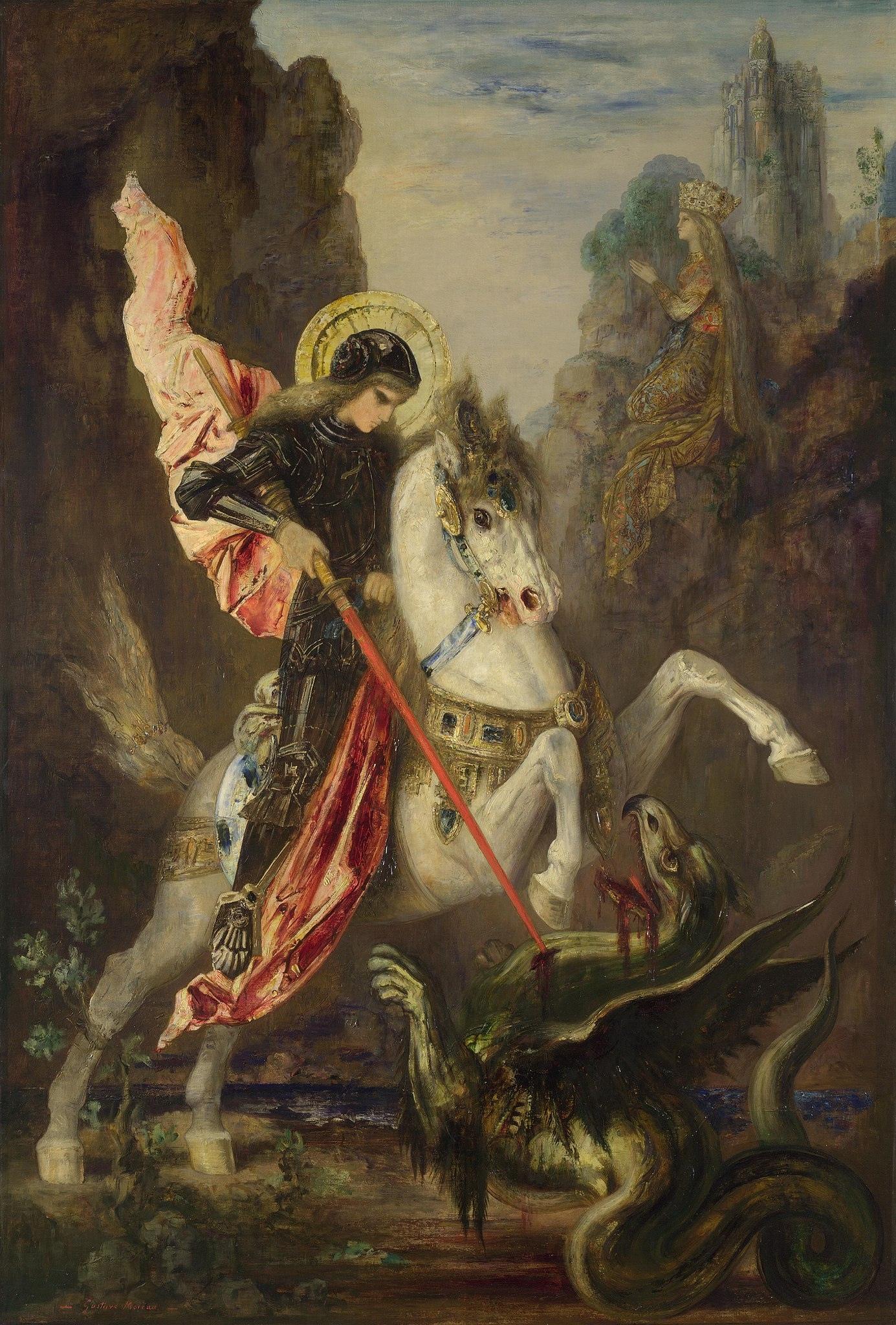A symbol of Christian chivalry and selflessness, the saint’s influence has left a lasting impression on Western culture. Responsible for the common fantasy trope of the knight slaying the dragon, his legend inspired more modern stories like Lord of the Rings, Shrek, and countless other creations from Shakespeare monologues to arcade games. Several countries and principalities like England, Georgia, and Portugal have adopted him as their patron saint, insisting that his likeness represents the values of their respective nations.
St. George’s prominence certainly peaked during the Middle Ages, and he is frequently shown wearing knights' armor from the era, emblazoned with his characteristic cross. A large amount of this period’s extant artwork and faithful restorations continues to reside in the imposing Gothic cathedrals of the High and Late Middle Ages.
Stained glass windows are particularly characteristic of Gothic architecture and used to portray various scenes from scripture and the lives of important saints for the largely illiterate congregation. Though many have broken or otherwise necessitated replacement over the centuries, stained glass windows in cathedrals and churches across Europe came to feature the classic image of St. George thrusting his spear through the dragon.




